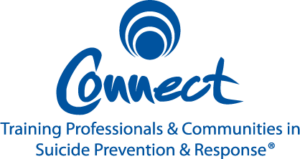survivors of suicide loss
When an individual takes their own life, the people they leave behind are often referred to as survivors of suicide loss. Survivors may be family members, friends, co-workers, neighbors, clinicians, first responders, community members or anyone else impacted by a suicide death. Each individual situation is different. The shock and pain experienced by communities following a suicide death can seem almost unbearable.
If you recently experienced a suicide death in your life, it is important for you to know that you are not alone. Hundreds of thousands of people have experienced firsthand what you are going through right now. The days and weeks immediately following a suicide are often the most difficult. Our hope is that you will use these resources to guide you through some of the difficult days ahead.
If you or someone you know is struggling, please reach out and get help.
- 988 Suicide & Crisis Lifeline – Call or text 988 for 24/7, free and confidential support for people in distress, prevention and crisis resources for you or your loved ones, and best practices for professionals. (Chat option is also available at 988lifeline.org).
- NAMI NH’s Information & Resource Line can help connect you with resources and support from NAMI NH and across the Granite State. Contact info@naminh.org or call 1-800-242-6264 (press 4) to leave a confidential message.
The NAMI NH calendar of events often includes events that may be of interest to survivors of suicide loss. This includes walks to build awareness for mental health and suicide prevention, events hosted by local survivors of suicide loss, and NAMI NH speaker programs such as SurvivorVoices, In Our Own Voice, and Life Interrupted.
Click on the tabs below to find resources and support for survivors of suicide loss.
The grieving process for someone who dies by suicide is complex and complicated. As with any sudden death, it is completely unexpected and there is not time to say goodbye. The fact that the individual took their own life increases the range and intensity of emotions. Combined with the stigma typically associated with suicide, the toll it can take on a survivor is enormous. It is important to recognize that grieving is an individual process and different people grieve in different ways. The grieving process for a survivor of a suicide is measured in months and years rather than days and weeks. Remember to accept the help of family members, friends, and professionals. You are not alone.
|
Writing An Obituary After Suicide Loss
After a suicide death, one of the first decisions a family will make is what to include in an obituary. The decision whether or not to disclose that the death was a suicide in an obituary is a personal one that each family will make on their own.
If the family chooses not to disclose the death as a suicide:
- Avoid using euphemisms such as “died after a brief illness” or “died as a result of an accident.” Making no statement about the cause of death is better than stating something misleading. Be aware that if the cause and manner of death have been determined by the Medical Examiner they are a matter of public record and can be accessed by media or others who request the death certificate.
- Not disclosing the cause of death sometimes forces friends and family to “pretend” the death was not a suicide when it may be known to others involved. Choosing not to disclose the death as a suicide isolate may isolate survivors from the support of other people who have survived the suicide of a loved one.
Stating openly that the individual died by suicide will do the following:
- End the rumors and innuendo that often accompany an untimely death.
- Allow friends and families who are also survivors to provide support from their own personal experience.
- Allow mental health professionals to begin postvention activities that may help reduce the possibility of future suicides.
- Assist in reducing the stigma associated with suicide.
If disclosing privately to other individuals that the death was a suicide, it is OK to mention how (e.g. used a gun, hanging), but state it simply and avoid providing specific/graphic details.
Making Funeral Arrangements
Most families are emotionally and financially unprepared to bury a loved one. Many survivors feel pressured to “do the right thing” by providing a full funeral service even when they have no ability to afford the expense involved. Trying to make these decisions when you are grieving is extremely difficult.
- Ask a trusted friend or relative to accompany you when you must make these decisions. Talk with your funeral director about all the options available to you. One option may be to establish a “memorial fund” for the individual. Donations can then be used to offset the costs of the funeral.
- Remember that friends and family are there to support you in your decisions, not judge you. Do what works best for you and your family.
Memorial Services
Planning a memorial service following a suicide death can be challenging for survivors. The service can be a highly emotional event that may impact the possibility of suicide contagion. It is a natural inclination to overstate the positive qualities of the deceased while at the same time minimizing less positive aspects, including their decision to take their own life. Suicide contagion can occur when events glorify the life or sensationalize the death of the individual, which increases suicide risk for others in the community.
Respecting the wishes of survivors while balancing the need to reduce contagion can be a very difficult task. The National Safe Messaging Guidelines provide best practices on how to communicate about suicide safely/
For more information on protocols for memorial services, please contact us directly.
Below are resources intended to help you support your child following a suicide loss.
- Friends of Aine (Manchester, NH) offers support to grieving children, as well as community education.
- Dougy Center provides support, resources, and connection youth and their families after a death.
- The National Child Traumatic Stress Network works to improve access to services for traumatized children, their families, and communities
- The US Department of Veterans Affairs has developed a series of fact sheets on how to talk to children and youth in different age groups about a suicide attempt in your family. Click the link that best fits your child’s age and development: 4–8 | 9–13 | 14–18
The New Hampshire Survivors of Suicide Loss Newsletter features survivor news, support opportunities, resources, and advocacy highlights.
Please note: The resources included here are not endorsed by NAMI NH, and NAMI NH is not responsible for the content of, or service provided by, any of these resources.


